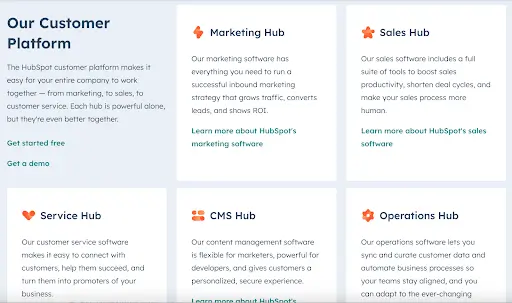The term “product launch” can be and is used by multiple people (product managers, marketing managers, CEOs and executives, sales managers, developers, among others) in quite different senses.
Depending both on the type of launch and where it fits into a product’s lifecycle stage, a launch might be a minor event or a crucial one. However, the key parts of how to launch a product successfully stay the same. For a PM, any launch comes with a minimum list of good practices to follow and, occasionally, some high stakes as well.
Let’s go through what we’ll cover in this product launch guide for product managers:
- What is a product launch?
- Types of product launch
- How to launch a product: Step-by-step guide
- Final thoughts
1. What is a product launch?
A product launch can be defined as the process through which a company brings a new product, or adds new parts to an already existing product, to the market.
Product launches can and do vary in terms of the impact they have in the world, and are not limited to the world of software and tech. Just think of all the seasonal flavors that soda companies like Coca Cola or Fanta flood supermarket shelves with every summer, only to have them disappear a few months later.
For already established companies, the launch of a completely new product line can be a turning point: just consider the paradigm shift unleashed after Steve Jobs unveiled the first iPhone in 2007.
2. Types of product launch
Hello World: Launching the first version of a product
Product Hunt has literally made it their business to help the first iteration of a product to see the light of day.
From its humble beginnings as one more page on the internet where product aspirants and founders tried to gain some visibility, it’s since morphed into a must-have to anyone hoping to make a name for themselves in the SaaS (Software as a Service) space.
Indeed, digital products today are announced on Product Hunt before they become available, with anyone who has signed up being duly notified once the launch has happened.
In a way, Product Hunt might be said to encourage a widespread use of Landing Page MVPs, or concierge MVPs, as well as being a relatively easy tool to gauge both PMF (Product-Market-Fit) and to get your product in front of an audience of product experts. The platform has catapulted products like Robinhood and Google Play into virtual stardom.
New feature launch
A different flavor of product launch comes into play when a new feature or functionality is launched into an already existing product.

One example would be Hubspot, which started out in 2004 as a company selling a CRM system tailored to the needs of SMEs. Today, Hubspot offers a suite of products, including a Service Hub (for customer support). Each new module has extended the original scope and functionality of the core Hubspot product offering.
In cases such as this, a product manager would not be starting from scratch: there’s an established customer or user base to draw from, which also comes with a set of expectations regarding both the product and the brand behind it.
New market launch/new segment launch
This type of launch applies to cases where a company or a product is extending its addressable market by becoming available in a new geographic market, in a new language, or by launching a product offering for a new business model (can be either B2C, B2B or others).
It’s fundamentally different from the launch of a brand new product, in that it primarily extends the reach of a product without necessarily demanding an investment into new features.
Good examples of this type of launch can be found in travel search engines like Booking.com or TripAdvisor: the core platform features are available regardless of region or language.
Technical and security upgrades
This is, traditionally, the boring type of product launch hardly anyone remembers to ask about. And yet, technical and security-related upgrades can be tremendously important: consider industries that are heavily regulated or where cybersecurity comes at a premium, such as fintech or SoMe (who wants to have their profile hacked?!).
Depending on whether the goal of this launch is to reach feature parity with your competitors or to distinguish yourself from the competition, your product launch strategy will be different.
3. How to launch a product: Step-by-step guide
Tips for successful product launches
A launch is typically the last step of an iteration within the entire product development lifecycle, and something that most aspiring PMs don’t necessarily consider when starting out in product management.
However, with the appropriate build-up, a product launch can turn into a momentous occasion: just consider how a company like Apple makes corporate history from theirs each time and, most recently, by announcing the first of many carbon neutral Apple products.
Step One: Define your AARRR metrics
The first part of how to launch a product involves bringing in the pirates.
AARRR stands for Acquisition, Activation, Retention, Referral and Revenue. The primary goal of this widely-used framework is attribution: figuring out the impact of a campaign, or a launch.
While it’s not used exclusively by product teams, it’s a very useful tool to establish goals and be able to assess whether those have been met after the launch (or not).
Important tools to have in place are product analytics (which provide a technical way of tracking the launch’s performance).
Step Two: Have a go-to-market strategy
A GTM, or go-to-market strategy, is a deliberate plan to mobilize internal resources in order for the launch to be as successful as possible. Mind you, success can have different meanings and is measured in radically different ways depending on the scope and the goals of the launch.
But the essential thing when it comes to GTM is to plan, execute, and measure your launch, rather than just announcing it and hope for the best.
Step Three: Gather the team
Sadly, and commonly not every single product manager will have all of these different team members to rely on. So it’s even more important to learn how to launch a product without having all of the potential team members.
This is particularly true at startups and smaller companies. Just because there might not be a dedicated marketing manager, or product marketing manager, doesn’t mean that the work can be skipped. From experience, the absence of a role might just mean that it’s up to the product manager to wear multiple hats at once!
Step Four: Marketing and PR
The keyword here is promotion. What needs to be promoted, to what extent and by what means (typically, by which channels)?
Marketing and PR are responsible for building momentum, building anticipation and generally, gearing up an audience for a product launch. For the product manager, this means ensuring that these folks are crystal clear about what is included in the launch, and what has been left out. Here are some great promotional media to work on together:
- press releases
- podcasts
- how to guides
Step Five: Customer support
The CS team is crucial in ensuring a smooth and seamless launch, so be sure to involve and keep them up-to-date.
They’ll be on the front line if your users are not able to log in, create an account, access the new feature and so on. Be sure to give them all relevant information, be available to help and, ideally, ensure that their knowledge of the feature or the product is as high as it can possibly be.
Good documentation to have in hand for this step:
- user guides
- feature descriptions
- release notes
Step Six: Sales enablement
Prior to the launch, carefully brief your sales team on both the content and the business significance of this new release, as well as where it’s positioned in the overall strategy of the company.
The main goal, from a product manager’s perspective in terms of how to launch the product successfully, is to provide your sales managers with everything they need to monetize on the launch, whether that is through new customer acquisition or upsells.
Useful documents to share with them might include:
- press releases
- market analysis
- product strategy
Step Seven: Post-launch review and analysis
After the launch party, it’s time to go back to your metrics and check the results: did you hit the mark? Did you exceed expectations, or did you underestimate the reach of the launch?
Making a short report on your findings will help you decide both on the strategy for the next launches and perhaps even have an impact on your product roadmap. Over time this feedback and iterative approach will mean that you’ll not only have mastered how to launch a product, but how to launch a winning one.

Final thoughts
Product launches can, when used as a powerful promotion tool, be the culmination of an entire team’s hard work.
Depending on the stage that the product is on, a successful launch might mean a product gets a considerable boost from its first iteration, or it might mean it finally catches up to its competitors.
CareerFoundry’s Product Management Program will teach you every step of how to launch a product as a PM, no matter what the industry or company size. It offers a structured learning path, taking you through everything you need to know about working in product in 2024, with the assistance and support of a dedicated mentor and tutor.
If you’d like to learn more about the different aspects of a product launch, these are a few articles worth your time:

